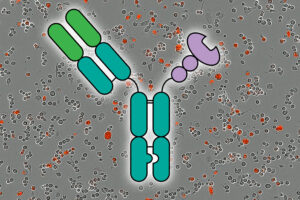
The Democratic Republic of Congo has declared a new outbreak of the deadly Ebola virus, marking its 15th such incident. The announcement came on Thursday, with health officials reporting 28 suspected cases and 15 deaths. This outbreak occurs three years after the last one, highlighting ongoing challenges in controlling the virus.
The Congo’s health ministry confirmed the presence of the Zaire strain of the virus after samples tested positive on Wednesday. The initial alert was raised when a 34-year-old pregnant woman was hospitalized in Kasai province on August 20, exhibiting symptoms such as high fever and vomiting. The ministry has not disclosed whether the woman survived.
“To date, the provisional report shows 28 suspected cases and 15 deaths, including 14 in Boulapé and one in Mweka, as well as four healthcare workers,” stated Congo’s Health Minister Samuel-Roger Kamba. The World Health Organization (WHO) has warned that the number of cases is likely to rise as transmission continues.
International Response and Local Expertise
The WHO is responding by delivering two tons of supplies, including mobile laboratory equipment and medical supplies, to aid in combating the outbreak. WHO’s regional director for Africa, Mohamed Janabi, emphasized the importance of leveraging Congo’s extensive experience in managing such outbreaks.
“The Democratic Republic of Congo has a lot of experience in combating such outbreaks,” Janabi noted. “We’re acting with determination to rapidly halt the spread of the virus and protect communities.”
Janabi further explained that the WHO is working closely with Congolese health authorities to scale up response measures swiftly. This collaboration aims to end the outbreak as quickly as possible, drawing on the country’s long-standing expertise in controlling viral diseases.
Understanding Ebola: Transmission and Symptoms
Ebola, officially known as Ebola virus disease, is a highly infectious and deadly hemorrhagic fever. Discovered in 1976 during simultaneous outbreaks in South Sudan and Congo, the disease was named after the Ebola River near one of the villages affected.
The WHO states that fruit bats are believed to be the natural hosts of the virus, which spreads to humans through contact with the bodily fluids of infected animals. Human-to-human transmission occurs through direct contact with the blood or body fluids of an infected person, or objects contaminated with these fluids.
Symptoms and Progression
Initial symptoms of Ebola include fever, fatigue, muscle pain, headache, and sore throat. These can progress to vomiting, diarrhea, rash, and impaired kidney and liver function. In later stages, internal and external bleeding may occur, though this is less common.
“Some patients may develop internal and external bleeding, including blood in vomit and feces, bleeding from the nose, gums, and vagina,” the WHO explains. “Bleeding at the sites where needles have punctured the skin can also occur.”
Historical Context and Recent Outbreaks
Congo’s last Ebola outbreak occurred in 2022 in the Equateur province, successfully controlled within three months due to robust health measures. This contrasts sharply with the devastating outbreak from 2018 to 2020, which resulted in nearly 2,300 fatalities. The swift response in 2022 was credited to improved emergency protocols and international support.
“With greater experience in Ebola control, national emergency teams, with the support from WHO and partners, mounted a swift response soon after the outbreak was declared,” the WHO stated at the time.
Key measures included testing, contact tracing, infection prevention, and community engagement. Notably, vaccination efforts commenced just four days after the outbreak was declared, utilizing a stockpile of treatments and 2,000 doses of the Ervebo vaccine. These were deployed to vaccinate contacts and frontline health workers in Kasai.
Meanwhile, neighboring Uganda experienced an Ebola outbreak earlier this year, triggered by the death of a nurse at a major hospital. This incident underscores the regional vulnerability to the virus and the necessity for coordinated international health efforts.
Looking Ahead: Challenges and Opportunities
The current outbreak in Congo presents both challenges and opportunities for public health officials. While the risk of further transmission remains high, the country’s extensive experience and international support offer hope for a swift resolution.
Efforts to contain the outbreak will likely focus on enhancing surveillance, improving healthcare infrastructure, and ensuring timely vaccination of at-risk populations. The international community’s continued support will be crucial in preventing further loss of life and restoring stability to affected regions.
As the situation develops, health authorities and international organizations will need to remain vigilant, adapting strategies as necessary to combat this persistent threat.





